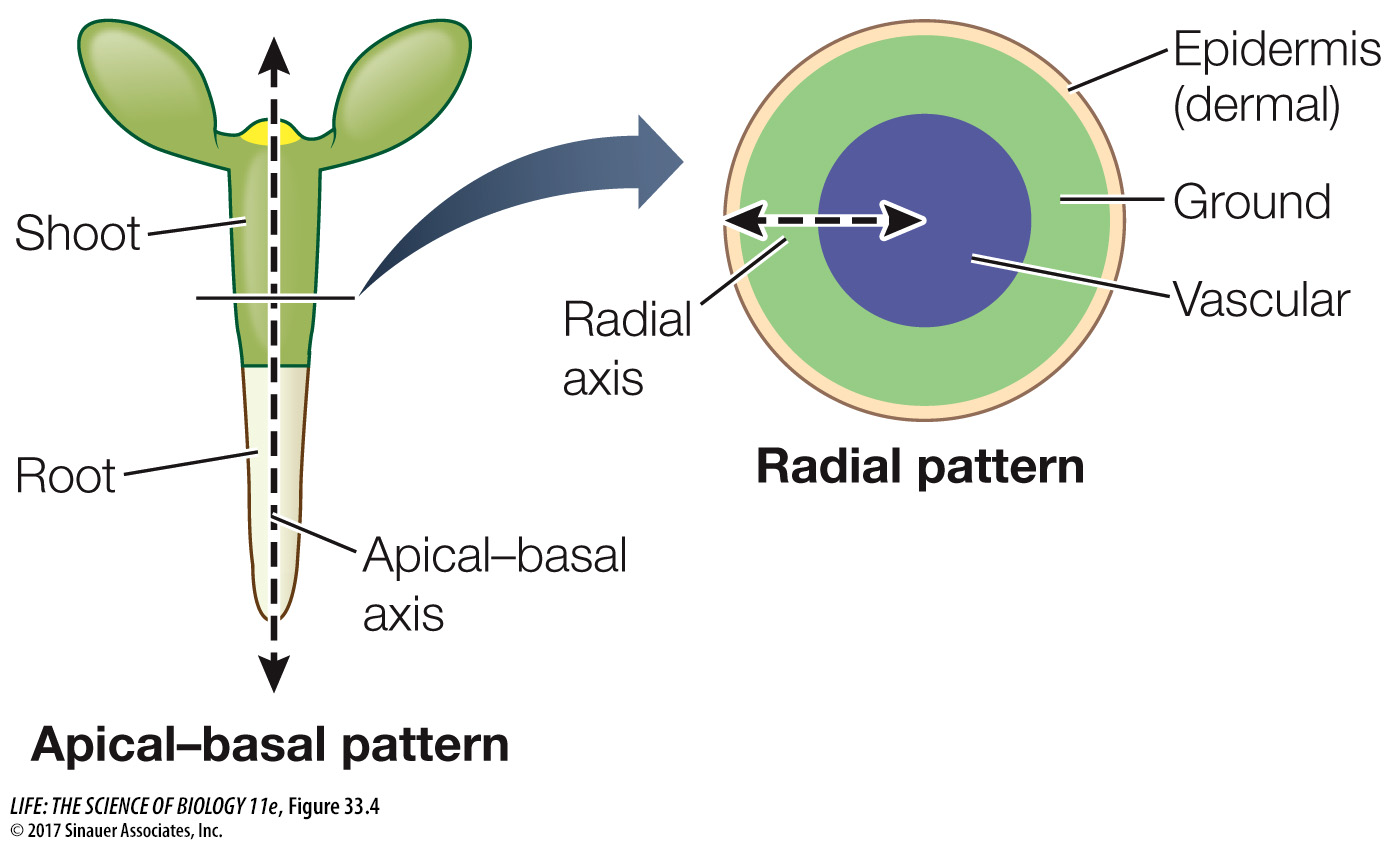Apical–basal polarity and radial symmetry are characteristics of the plant body
Two basic patterns are established early in plant embryogenesis (embryo formation) (Figure 33.4):

The apical–
basal axis : the arrangement of cells and tissues along the main axis from root to shootThe radial axis: the concentric arrangement of the tissue systems (discussed in Key Concept 33.2)
Both axes are best understood in developmental terms. We will focus here on embryogenesis in Arabidopsis thaliana. As you have seen in previous chapters, Arabidopsis is a model eudicot that has been studied extensively by plant physiologists and geneticists. You can follow the steps in plant embryogenesis in Figure 33.5.

Q: How do you think the differences between the apical and basal daughter cells are established?
There is an asymmetry in the cell division forming basal and apical cells. In animal cells, such asymmetry is set up by uneven distribution by cytoplasmic granules that act as signals for cell fate determination.
The first step in the formation of an Arabidopsis embryo is a mitotic division of the zygote that gives rise to two daughter cells, an apical daughter cell and a basal daughter cell (see Figure 33.5, Step 1). An asymmetrical plane of cell division results in an uneven distribution of cytoplasm between these two cells, and this determines their different fates. Signals in the smaller, apical daughter cell induce it to produce the embryo proper, while the larger basal daughter cell produces the suspensor, a structure that connects the developing embryo to the storage material (see Figure 33.5, Step 2). This division not only establishes the apical–
In eudicots such as Arabidopsis, the initially globular embryo develops into the characteristic heart stage as the cotyledons start to grow (see Figure 33.5, Step 3). Further elongation of the cotyledons and of the main axis of the embryo gives rise to the torpedo stage, during which some of the internal tissues begin to differentiate (see Figure 33.5, Step 4). Between the cotyledons is the shoot apical meristem; at the other end of the axis is the root apical meristem. Each of these meristems contains undifferentiated cells that will continue to divide to give rise to the organs that will develop during the life of the plant.
As shown in Step 2 of Figure 33.5, the plant embryo is first a sphere and later a cylinder. The root and stem retain this cylindrical shape throughout the plant’s life. You can see this most easily in the trunk (mature stem) of a tree. By the end of embryogenesis, the radial symmetry of the plant has been established (see Figure 33.4). The embryonic plant contains three tissue systems, arranged concentrically, which will give rise to the tissues of the adult plant body. We will discuss these tissue systems in the next section.